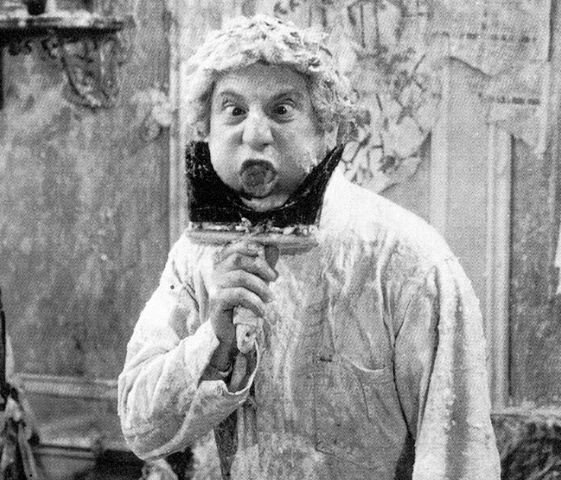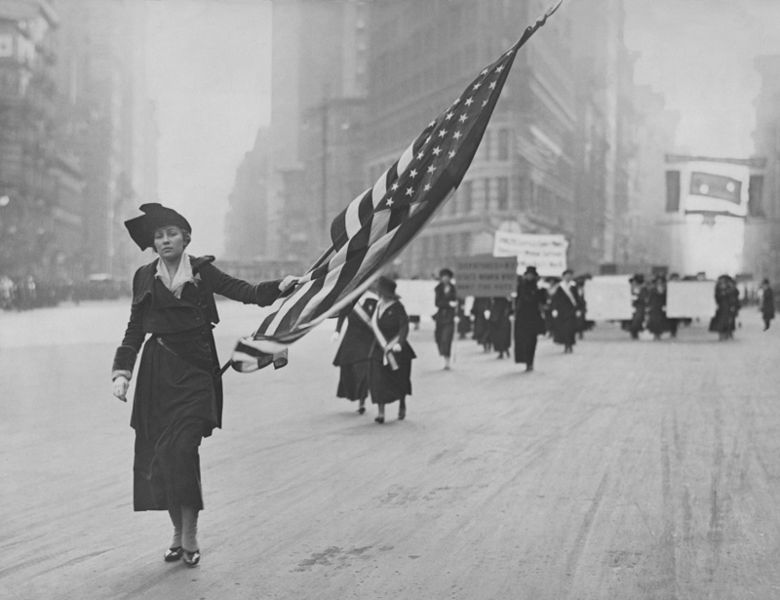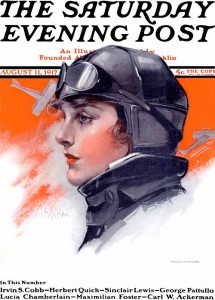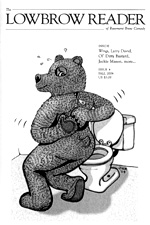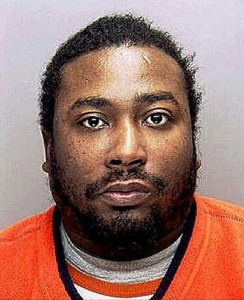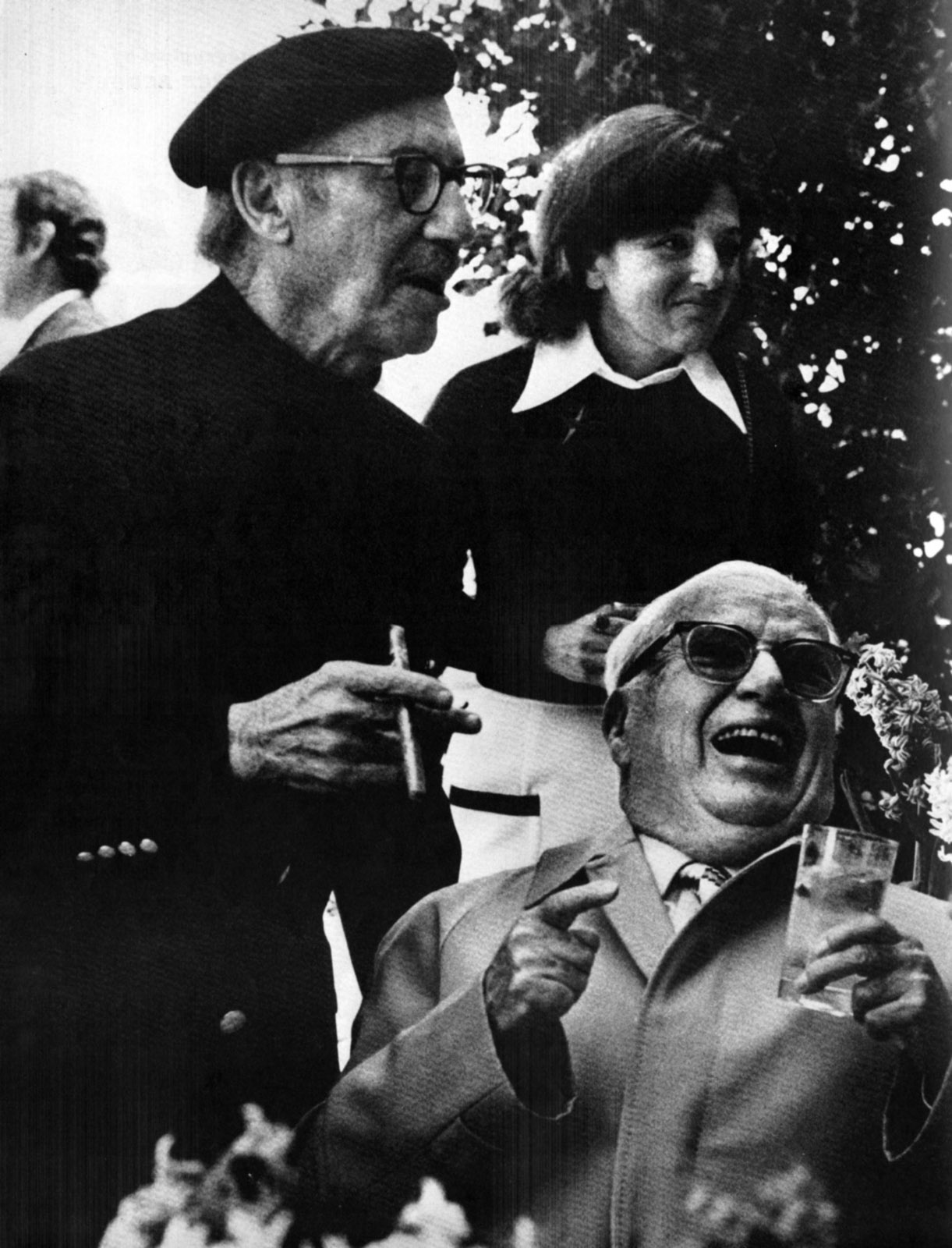Two videos of that wonderful Harpo Marx, the first comedian I adored. The initial one is a 1958 Person to Person “interview” a studio-bound Edward R. Murrow conducted via long distance with the mute comic and his talkative family in their Palm Springs home. The second is a 1961 appearance on the Today show to promote the release of his now-classic biography, Harpo Speaks!
You are currently browsing articles tagged Harpo Marx.
Tags: Harpo Marx
Harpo Marx, who was plugging his new book, appeared on I’ve Got a Secret, 1961. Johnny Carson on the panel.
From the 1983 New York Times obituary of Mildred Dilling, who taught Harpo how to play his musical instrument and was profiled in the New Yorker in 1940 (subscription required):
“Mildred Dilling, a concert harpist who performed for five Presidents, taught Harpo Marx and owned the world’s largest private collection of harps, died in her Manhattan home last Thursday. She was 88 years old.
Miss Dilling performed throughout North and South America, the Orient and Europe. At the peak of her career, she gave 85 concerts and traveled 30,000 miles a year. In her early 80’s, Miss Dilling was still performing 10 concerts a year. She also conducted harp workshops at colleges and universities, giving master classes at the University of California, Los Angeles.”
Tags: Harpo Marx, Johnny Carson, Mildred Dilling
This classic photograph shows commercial artist and portraitist Neysa McMein serving as a flag bearer during a 1917 New York City parade. The image originally appeared in the New York Times, but the photographer is unknown. McMein moved to New York from Illinois and became a wildly successful commercial artist who created covers for the Saturday Evening Post and numerous women’s publications of the day. She was also a steadfast member of the Algonquin Round Table and a feminist and early joiner of the Lucy Stone League, which believed women should keep their names after marriage. An excerpt about her from the Harpo Marx book, Harpo Speaks!:
“The biggest love affair in New York City was between me–along with two dozen other guys–and Neysa McMein. Like me, Neysa was an unliterary, semi-literate gate-crasher at the Algonquin. But unlike me, she was beautiful and bursting with talk and talent. A lot of us agreed she was the sexiest gal in town. Everybody agreed she was the best portrait and cover artist of the times.
Her studio was our third most favorite hangout, after the Algonquin and Woollcott‘s apartment. We had some wonderful parties at Neysa’s place, and I was always the last to leave.”
I used to work with the really witty journalist Jay Ruttenberg. In addition to his many other enterprises, he publishes a wry, wonderful zine called The Lowbrow Reader, which focuses on the world of comedy, gleefully mocking everything along the way. For anyone raised on Mad magazine, it’s so up your alley. (You can order back issues here.) And it’s fun knowing that someone is walking around in 2010, completely obsessed with Harpo Marx and the like.
Each cover has a play on the same disgusting theme: someone attempting to relieve himself or herself in a bathroom. But complications often ensue. In the cover on the right, a man dressed as a bear is stuck in his costume when he really needs to use the toilet. When I had my apartment painted a few years back, I walked in on one of the workers, who spoke no English, laughing heartily at this image. A guy in a bear costume trying desperately to take a dump is a universal language.
Inside this issue, you can read an essay from a woman who dated Jackie Mason and a critical consideration of the TV show Wings. (No, seriously.) There’s also a filthy, funny piece about the inner sanctum of Brooklyn rapper Ol’ Dirty Bastard (who passed away after this issue was published). The person describing ODB’s home is a talented writer named Margeaux Watson, also a former colleague, who visited the rapper’s lair to interview him in all his dirty, bastardly glory. An excerpt:
“Lowbrow Reader: You’re probably one of the few women who has been inside Ol’ Dirty Bastard’s house and hasn’t returned with a venereal disease.
Margeaux Watson: Or a child.
Lowbrow Reader: Where does he live?
Margeaux Watson: He lives in Brooklyn. It’s an odd location–it’s not ghetto-ish, but it’s also not where you’d expect a star to live. In Brooklyn, most stars live in Brooklyn Heights, Williamsburg or Fort Greene. But he’s in more of a working-class, family neighborhood. A lot of brownstones and row houses; it’s not near a subway or an urban center.
Lowbrow Reader: What’s his house like?
Margeaux Watson: He lives in a brownstone. It’s been renovated, so it’s modern on the inside. It’s a narrow apartment, with white walls and hardwood floors. It’s surprisingly well-kept and pretty neat–except for its smell. It smelled bad.
Lowbrow Reader: Can you describe the odor?
Margeaux Watson: It was the smell of Newport cigarettes, feet, ass, food and unbrushed teeth. Just all-around funk. A bouquet of stink.”
Tags: Harpo Marx, Jackie Mason, Jay Ruttenberg, John Mathias, Margeaux Watson, Ol' Dirty Bastard
Groucho Marx, perhaps the greatest comedian of them all, sat down with Playboy in March 1974 for a wide-ranging Q&A. Groucho, who was 83 at the time, recalled everything from going to brothels with a young Charlie Chaplin to encountering anti-Semitism at country clubs. The following are a few excerpts.
_________________________
Playboy:
There’s a rumor that you and Harpo once went to a party naked.
Groucho Marx:
It was when we were playing in I’ll Say She Is and we were invited to a bachelor party for a friend of ours who was getting married. So Harpo and I got into the elevator and took off all our clothes and put them in suitcases. We were stark-naked. But we got off at the wrong floor, where the bride was having a party for her friends. So we ran around naked until a waiter finally came with a couple of dish towels—or, in my case, a bath towel.
Playboy:
Have you ever been a victim of anti-Semitism?
Groucho Marx:
Oh, sure. Years ago, I decided to join a beach club on Long Island and we drove out to a place called the Sands Point Bath and Sun Club. I filled out the application and the head cheese of the place came over and told me we couldn’t join because I was Jewish. So I said, “My son’s only half Jewish. Would it be all right if he went in the water up to his knees?”
_________________________
Playboy:
The Marx Brothers have also had a number of literary friends. Didn’t you correspond with T. S. Eliot?
Groucho Marx:
He wrote to me first. He said he was an admirer of mine and he would like a picture of me. So I sent him a picture. And he sent it back. He said, “I want a picture of you smoking a cigar.” So I sent him one. Later he told me there were only three people he cared about: William Butler Yeats, Paul Valéry and Groucho Marx. He had those three pictures in his private office. When I went to visit him. I thought he wanted to talk about all those fancy books he had written, like Murder in the Cathedral. But he wanted to talk about the Marx Brothers. So naturally we became close friends and had a lot of correspondence. I spoke at his funeral.
_________________________
Playboy:
How did you and Chaplin first meet?
Groucho Marx:
I took a walk and I passed this dump theater, the Sullivan-Considine. I heard the most tremendous roar of laughter, and I paid my ten cents and went in and there was a little guy on the stage, and he was walking around kinda funny. It was Chaplin. It was the greatest act I’d ever seen. All pantomime.
Then the following week, I went backstage to visit him and tell him how wonderful he was, and that’s how we got acquainted. Each week we would be in the same towns in Canada; I can’t remember all the towns; this was a hell of a long time ago. We used to go to the whorehouses together, because there was no place for an actor to go in those towns, except if you were lucky, maybe you’d pick up a girl, but as a rule, you’d have to go to a hook shop. And then Chaplin and I got very well acquainted. Not together! I mean, I wasn’t with him! I was with him, but not with a girl, I mean….•
Tags: Charlie Chaplin, Chico Marx, Groucho Marx, Harpo Marx, T.S. Eliot

